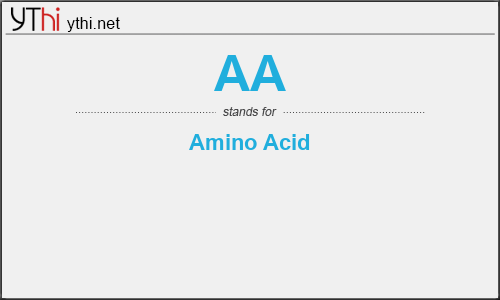What does AA mean? What is the full form of AA?
The full form of AA is Amino Acid
Amino acids are organic compounds that contain amino ({\displaystyle -{\text{NH}}_{3}^{+}}) and carboxylate ({\displaystyle -{\text{CO}}_{2}^{-}}) functional groups, along with a side chain (R group) specific to each amino acid. The elements present in every amino acid are carbon (C), hydrogen (H), oxygen (O), and nitrogen (N); in addition sulfur (S) is present in the side chains of cysteine and methionine, and selenium (Se) in the less common amino acid selenocysteine. More than 500 naturally occurring amino acids are known to constitute monomer units of peptides, including proteins, as of 2020 (though only 20 appear in the genetic code, plus selenocysteine, which is encoded in a special way.)
Amino acids are formally named by the IUPAC-IUBMB Joint Commission on Biochemical Nomenclature in terms of the fictitious “neutral” structure shown in the illustration. For example, the systematic name of alanine is 2-aminopropanoic acid, based on the formula {\displaystyle {\text{CH}}_{3}{\text{-CH(NH)}}_{2}{\text{-COOH}}}. The Commission justified this approach as follows:
The systematic names and formulas given refer to hypothetical forms in which amino groups are unprotonated and carboxyl groups are undissociated. This convention is useful to avoid various nomenclatural problems but should not be taken to imply that these structures represent an appreciable fraction of the amino-acid molecules.





Leave a Reply
You must be logged in to post a comment.